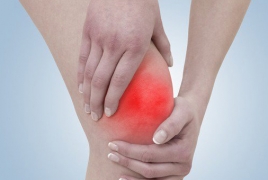
Humans may not be able to regrow amputated limbs like salamanders can -- but we do have a "salamander-like" ability to regrow damaged cartilage, CNN reports citing a new study.
The study, published Wednesday in the journal Science Advances, found that "cartilage in human joints can repair itself through a process similar to that used by creatures such as salamanders and zebrafish to regenerate limbs," according to the press release by Duke Health, which helped lead the research.
These findings could open the door to new treatments for joint injuries and diseases like osteoarthritis -- and perhaps even lead to human limb regeneration one day.
Salamanders, axolotl, and other animals with regenerative abilities have a type of molecule called microRNA, which help regulate joint tissue repair. We have microRNA too, but our mechanism for cartilage repair is stronger in some parts of the body, the study found. For example, the microRNA molecules are more active in our ankles, and less active in our knees and hips.
"We were excited to learn that the regulators of regeneration in the salamander limb appear to also be the controllers of joint tissue repair in the human limb," said Duke professor and researcher Ming-Feng Hsueh in the press release. "We call it our 'inner salamander' capacity."
The study also found that the "age" of cartilage -- meaning whether proteins have changed structure or undergone amino acid conversions -- depends on its location in the body. Cartilage is "young" in the ankles, "middle-aged" in the knees, and "old" in the hips. This correlation lines up with how animals regenerate fastest at the furthest tips of their bodies, like tails or the ends of legs.
These factors -- the activity level of microRNA and the age of cartilage -- explain why ankle injuries heal faster than knee and hip injuries, and there are fewer instances of arthritis in the ankle compared to the other two areas.
Scientists have known for years that humans do have some regenerative capabilities -- when children's finger tips are amputated, the tip can regenerate when treated correctly. But it was widely believed that these capabilities were limited, and that humans were "unable to counteract cumulative damage" to their joints, the study said -- which these new findings disprove.

